Trip deprivation can legitimately reflect both functioning and capability when deprivation is carefully defined.
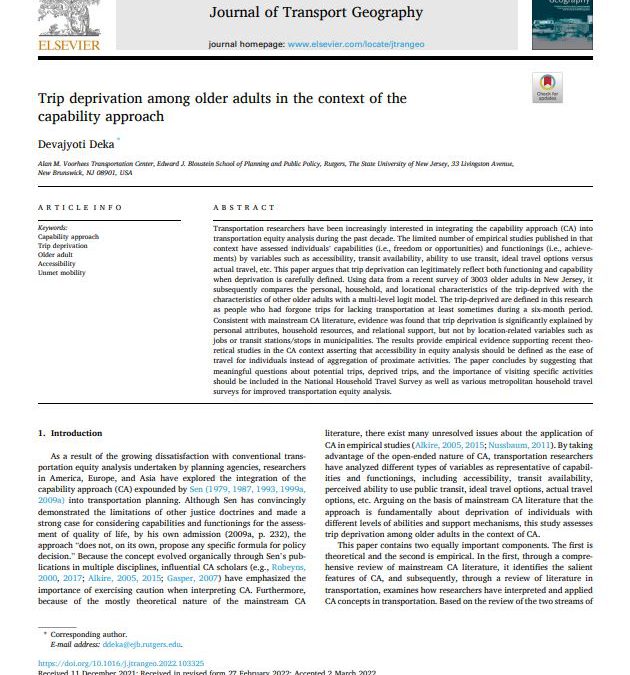

Trip deprivation can legitimately reflect both functioning and capability when deprivation is carefully defined.
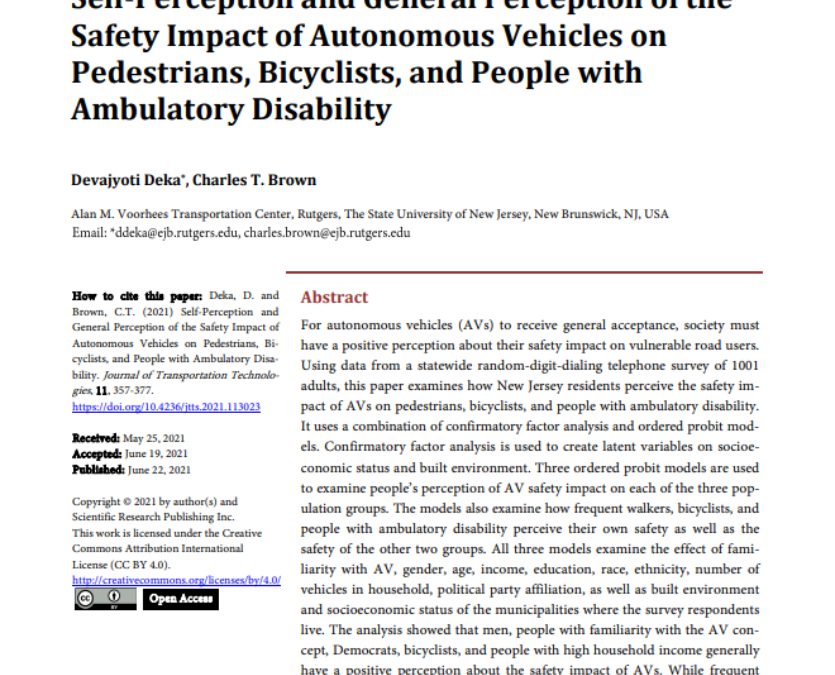
Using data from a statewide random-digit-dialing telephone survey of 1,001 adults, this paper examines how New Jersey residents perceive the safety impact of AVs on pedestrians, bicyclists, and people with ambulatory disability.
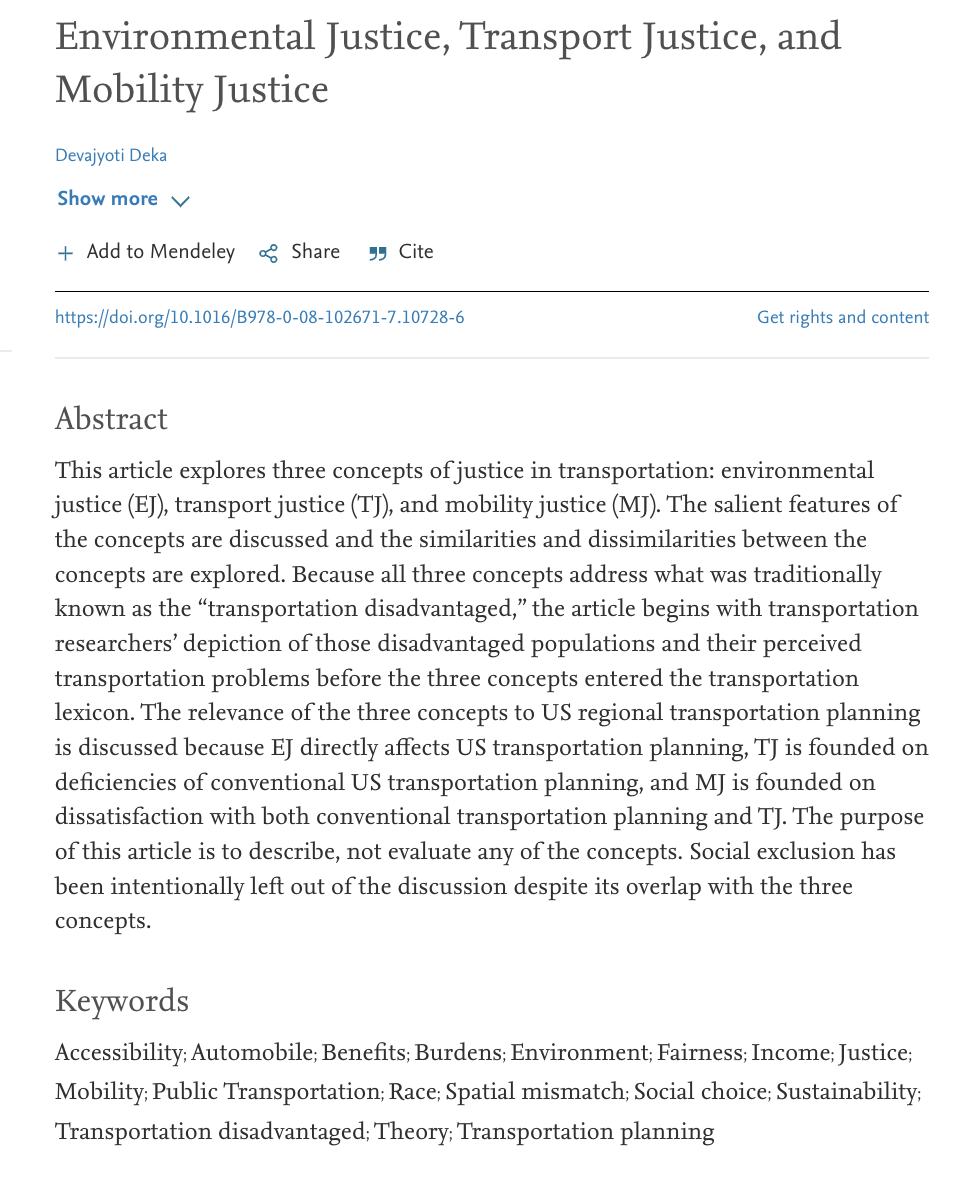
This article explores three concepts of justice in transportation: environmental justice (EJ), transport justice (TJ), and mobility justice (MJ).
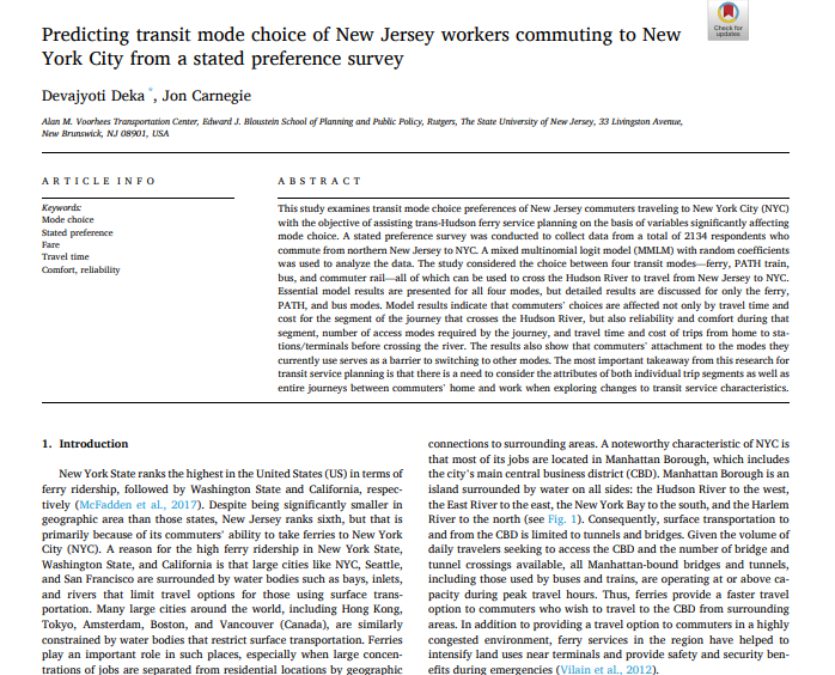
This study examines transit mode choice preferences of New Jersey commuters traveling to New York City with the objective of assisting trans-Hudson ferry service planning on the basis of variables significantly affecting mode choice.
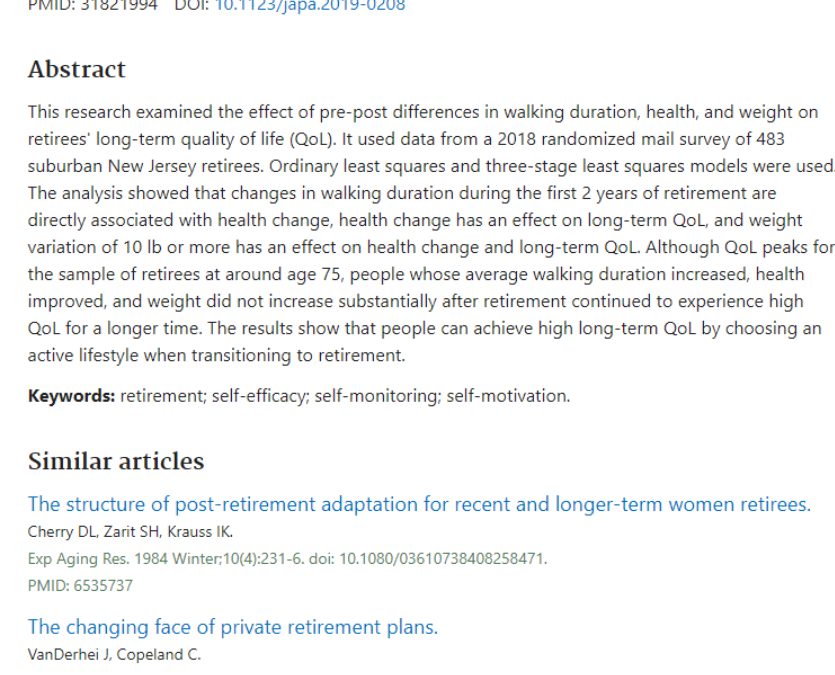
This research examined the effect of pre-post differences in walking duration, health, and weight on retirees’ long-term quality of life (QoL).
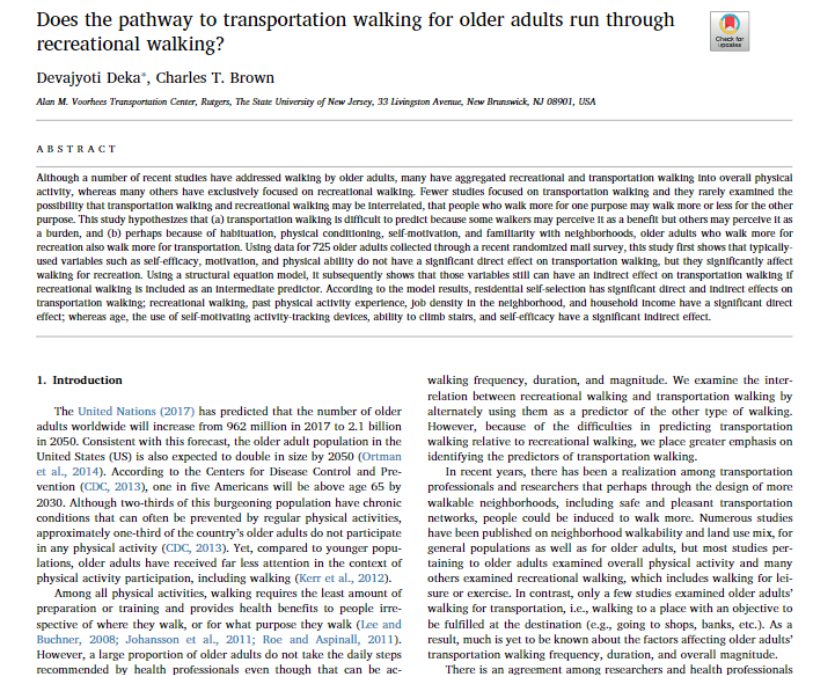
Although a number of recent studies have addressed walking by older adults, many have aggregated recreational and transportation walking into overall physical activity, whereas many others have exclusively focused on recreational walking.
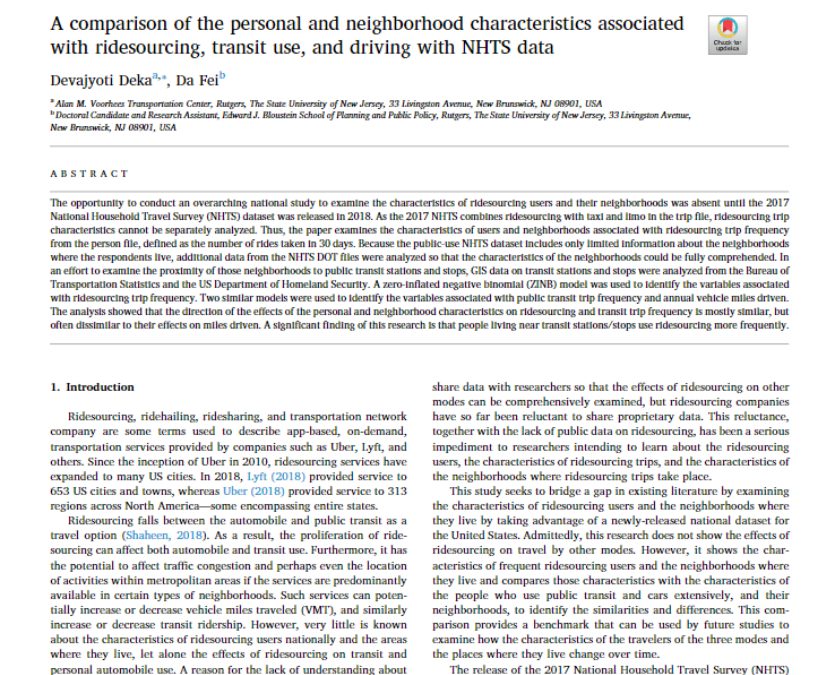
The opportunity to conduct an overarching national study to examine the characteristics of ridesourcing users and their neighborhoods was absent until the 2017 National Household Travel Survey (NHTS) dataset was released in 2018.
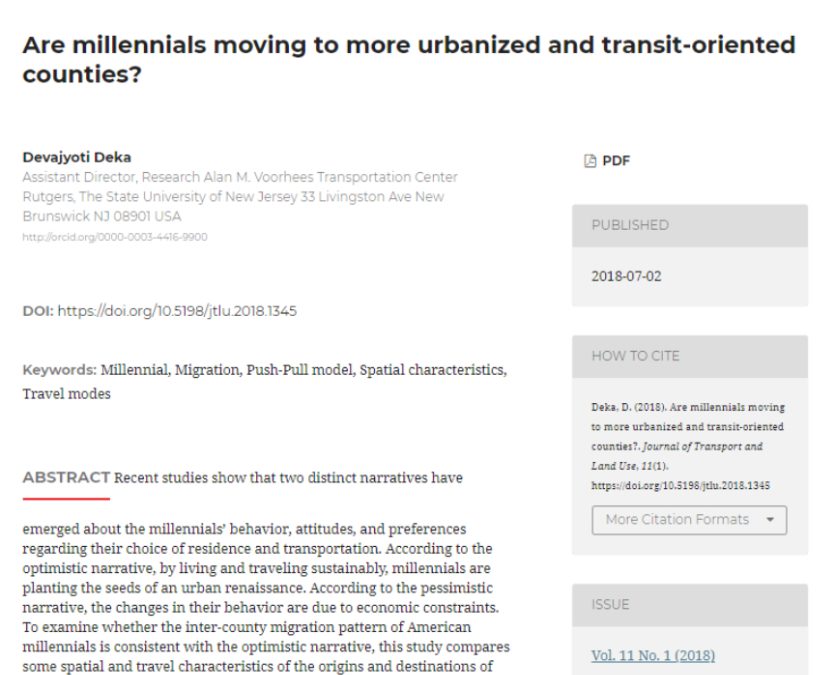
Recent studies show that two distinct narratives have emerged about the millennials’ behavior, attitudes, and preferences regarding their choice of residence and transportation.
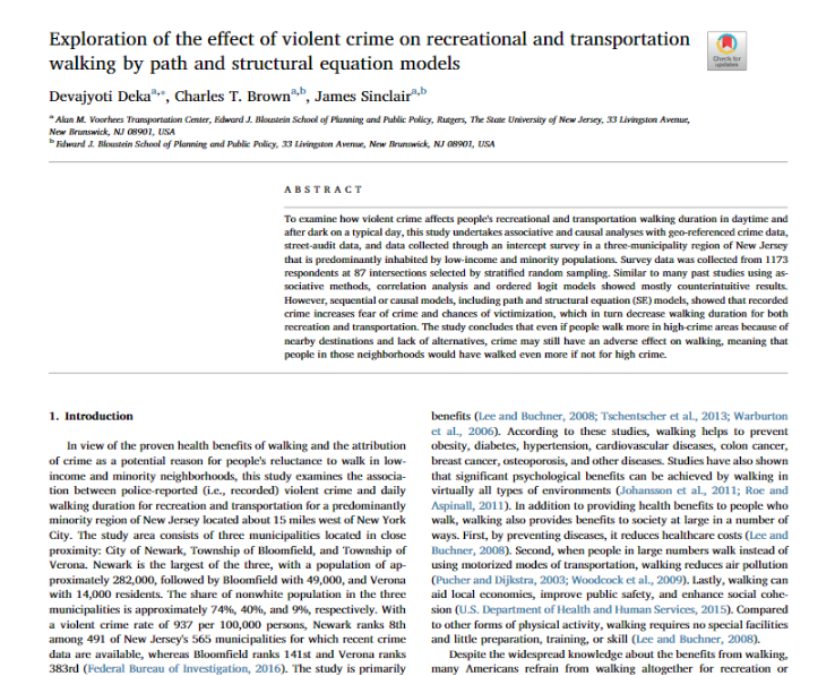
To examine how violent crime affects people’s recreational and transportation walking duration in daytime and after dark on a typical day.
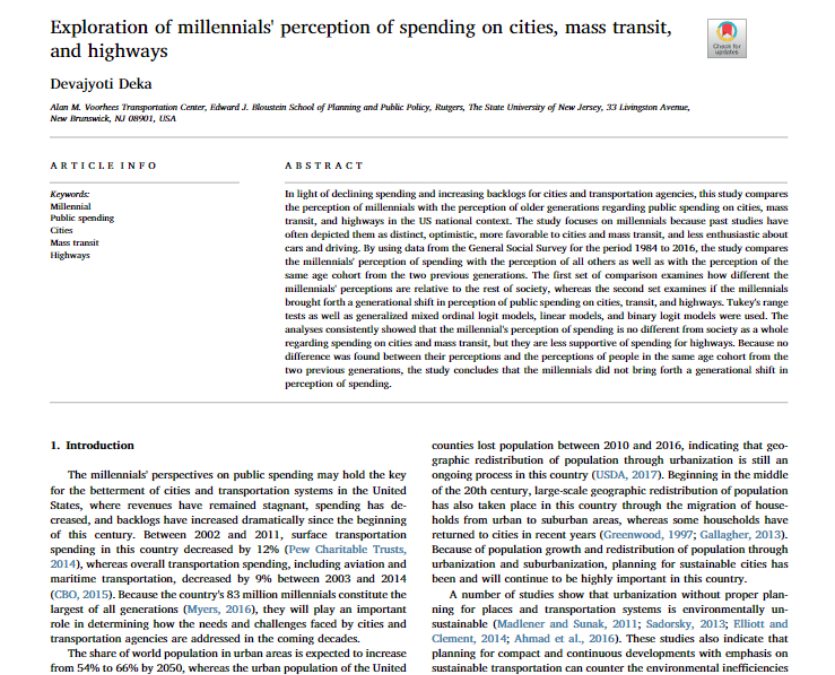
This study compares the perception of millennials with the perception of older generations regarding public spending on cities, mass transit, and highways in the US national context.
Objective While fatal crashes are available through the Fatality Analysis Reporting System (FARS) and are readily available to the public, many states do not make their crash data easily accessible for the public and the research community. The public has an interest...
Through this research, NJ TRANSIT sought to understand how women and members of the lesbian, gay, bisexual, transgender, queer plus community, sometimes referred to as sexual and gender minorities (SGMs) travel on NJ TRANSIT so the agency can provide better...
Recent advances in biometric sensing technologies, such as eye tracking, heart rate trackers, and galvanic skin response (GSR) sensors, offer new opportunities to measure pedestrian stress level and their travel experiences in real-time. Uncertainty remains about...
Background Increasing evidence positively links greenspace and physical activity (PA). However, most studies use measures of greenspace, such as satellite-based vegetation indices around the residence, which fail to capture ground-level views and day-to-day dynamic...